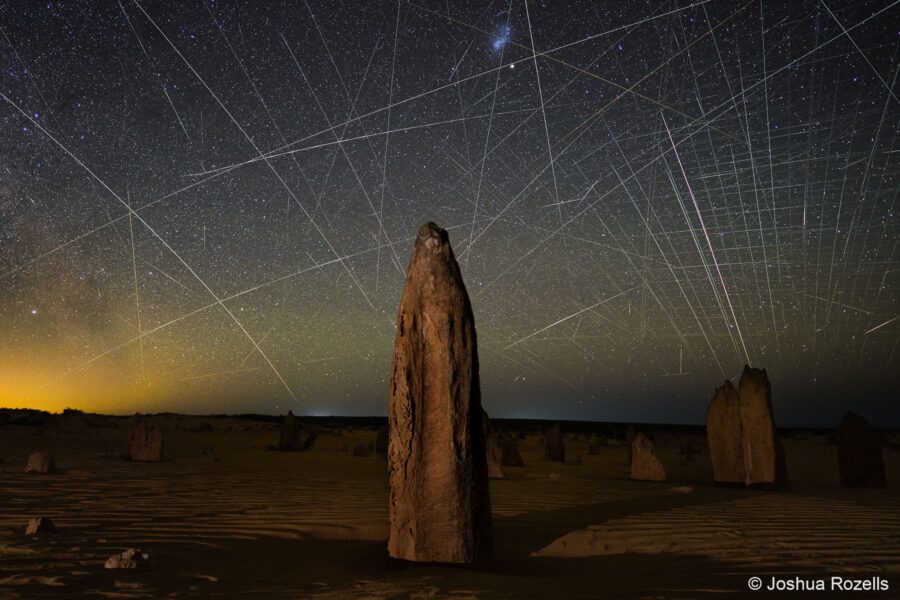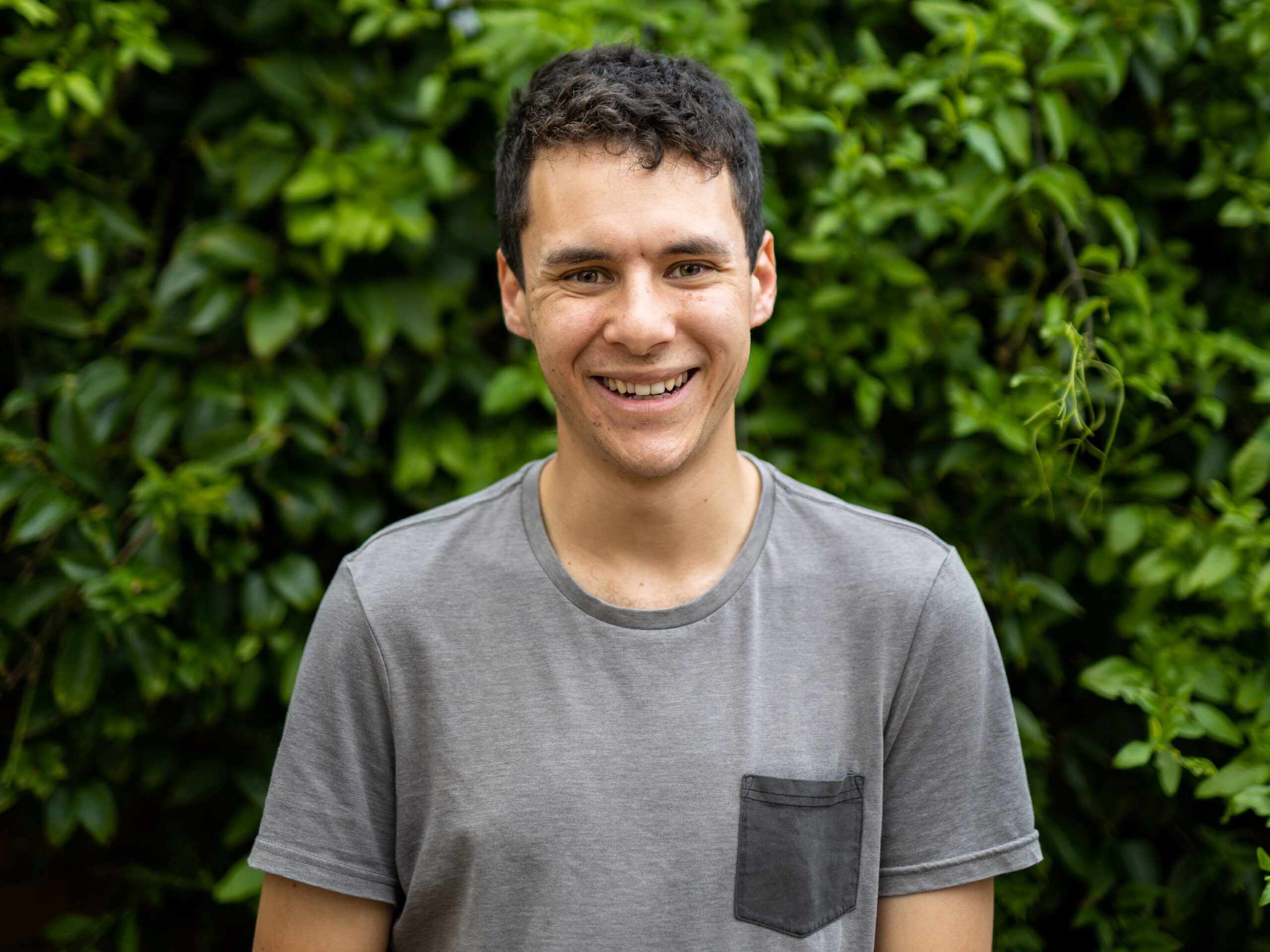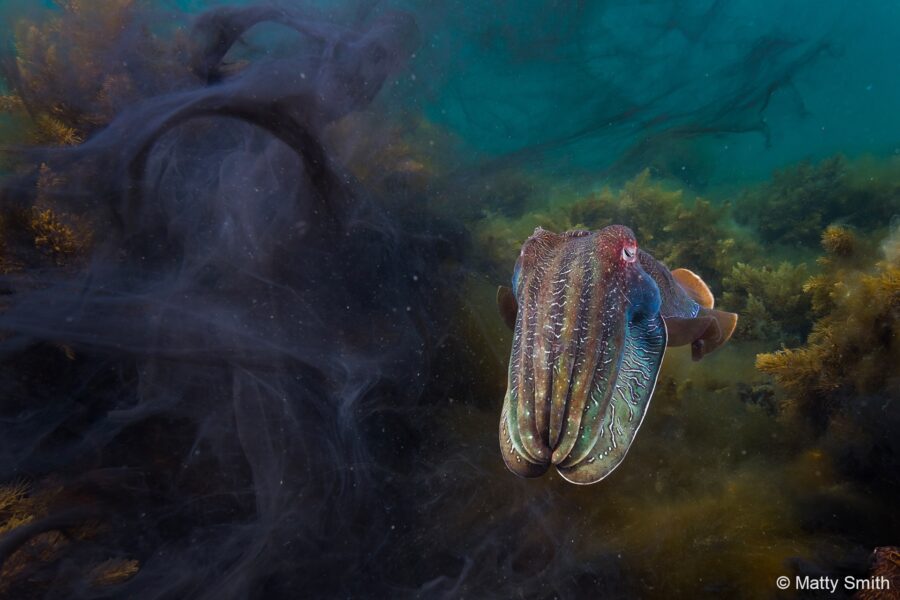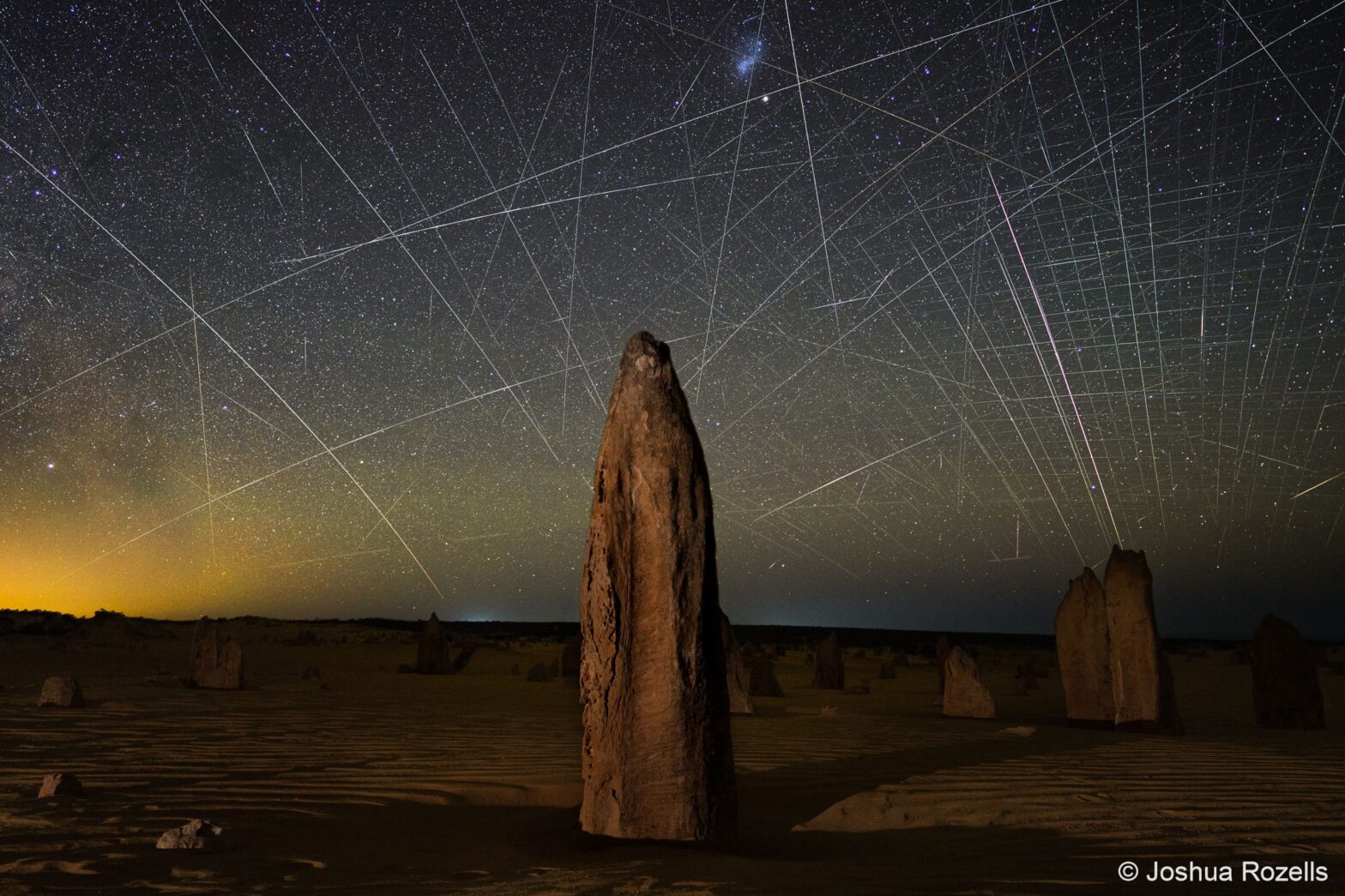[ad_1]
September 26, 2023

‘Swamped Skies’ by Joshua Rozells
This forms part of a series of Q&As with winning photographers from this year’s Australian Geographic Nature Photographer of the Year awards.
Joshua Rozells was crowned the winner of the ‘Our Impact’ category in the 2023 Australian Geographic Nature Photographer of the Year (AGNPOTY) competition.
His winning image, titled ‘Swamped Skies’, shows light pollution caused by satellites in the sky above Western Australia’s Pinnacles Desert.
Can you tell us the back story of this photo?
This photo was taken on an astrophotography trip I went out on in early 2022 to the Pinnacles, Western Australia. The photo was originally meant to be a star trail but I changed it to show the amount of satellites in the night sky after I reviewed the photos. The photo shows the impact that satellites are having on our natural night sky. It is an issue that did not exist until a few years ago. It is an issue that is increasing at an alarming rate due to the exponential rise in the amount of satellites that have been launched into Earth’s orbit in recent years.
What is your connection to the subject matter?
As a hobbyist astrophotographer, satellites are increasingly becoming a problem. There hasn’t been a night of astrophotography that has gone by that I haven’t captured satellites in my photos and the issue has progressively gotten worse. For astrophotographers like myself, satellites are a nuisance but not a deal breaker. Even though I don’t like satellites in my photos, I can deal with satellites in my photos or Photoshop them out of my photos if I really want to. But for astronomers, it is becoming a problem that is impacting their ability to conduct astronomy research.
Where is it taken, and what led you to this site?
The photo was taken at the Pinnacles. Between the dark skies and the unique limestone structures, it is is one of the most amazing locations for astrophotography in Western Australia! I have been to the Pinnacles many times to do astrophotography.

Were you unexpectedly there or had you planned to cover this moment?
The shot was taken unexpectedly; I had originally gone to the Pinnacles to do a star trail. When I was out in the field I noticed that there were a few satellites in the sky but didn’t think much about it. It was only when I got home and reviewed the photos that I noticed the sheer amount of satellites that were present in the sky that night. Once I realised how many satellites were in the sky I decided that I would edit the photo to show the amount of satellites rather than editing it into a star trail.
What are the technical challenges of photographing this kind of scene?
Lots of planning is required for astrophotography to take place and all the planning can quickly come undone if the weather doesn’t cooperate. I often plan my astrophotography trips months in advance to ensure that I get the best photo possible.
How did you prepare to take this image?
Going out for an astrophotography trip always requires a fair bit of preparation. Firstly, I checked the moon’s luminosity and rising/setting time to find a night that there would be a night without any moonlight to make sure the stars are more visible. A few days before the trip I had to check the weather conditions (most importantly the cloud coverage and wind conditions) to make sure that the conditions would be good for astrophotography. I arrived at the Pinnacles during daylight so that I could scout out a good location at the Pinnacles to take the photo. Finally, I set up the camera on a tripod and attached an intervalometer to take consecutive photos.
Did you have special equipment?
Other than the camera and tripod, I used an intervalometer to enable the camera to take consecutive photos. I also used two panel lights to light up the Pinnacle in the foreground.
Have you covered this topic/subject before?
I have not done a photo that showed the amount of satellites in the sky before.
Why is this form of photography important to you?
Astrophotography is important to me because it helps me to see what the human eye cannot see. As a Christian it also helps me to reflect on the greatness of God; I’m always in awe of His magnificent creation when I’m out stargazing. When I’m out stargazing I can’t help but to meditate on the Bible passage Psalm 19:1, which says “The heavens declare the glory of God; the skies proclaim the work of his hands”.
Any additional thoughts?
This photo clearly shows the impact that satellites are having on our night sky. The proliferation of satellites is increasingly becoming a problem for astronomers. In 2021, over 1700 spacecrafts and satellites were launched into orbit. Light pollution caused by SpaceX’s Starlink satellites are the worst offenders as they are low Earth orbit satellites, and they travel in satellite trains. One can only assume the issue will exponentially increase in the next few years, with SpaceX alone intending to launch over 40,000 satellites in total. The space industry is almost entirely unregulated, with no limits on the amount of satellites that anyone is able to launch and there is currently no regulation in place to minimise the light pollution they cause. Organisations such as the International Astronomical Union’s Center for the Protection of the Dark and Quiet Sky are advocating for the regulation and protection of the night sky. But more needs to be done by the space industry, governments, and NGOs so that we can all enjoy the beauty of the natural night sky for generations to come.
 Related: Winners: 2023 Australian Geographic Nature Photographer of the Year
Related: Winners: 2023 Australian Geographic Nature Photographer of the Year
[ad_2]
